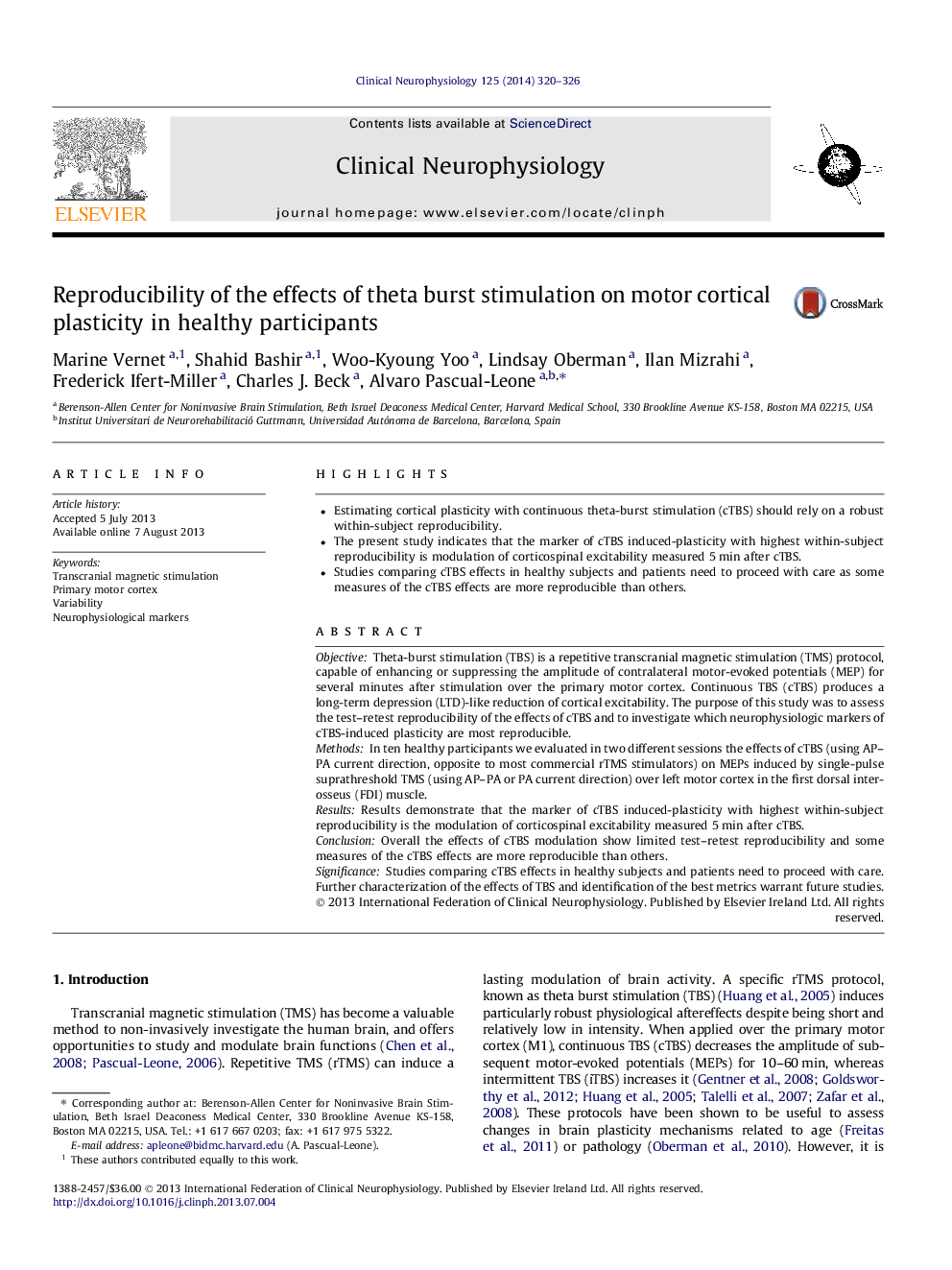| Article ID | Journal | Published Year | Pages | File Type |
|---|---|---|---|---|
| 3044401 | Clinical Neurophysiology | 2014 | 7 Pages |
•Estimating cortical plasticity with continuous theta-burst stimulation (cTBS) should rely on a robust within-subject reproducibility.•The present study indicates that the marker of cTBS induced-plasticity with highest within-subject reproducibility is modulation of corticospinal excitability measured 5 min after cTBS.•Studies comparing cTBS effects in healthy subjects and patients need to proceed with care as some measures of the cTBS effects are more reproducible than others.
ObjectiveTheta-burst stimulation (TBS) is a repetitive transcranial magnetic stimulation (TMS) protocol, capable of enhancing or suppressing the amplitude of contralateral motor-evoked potentials (MEP) for several minutes after stimulation over the primary motor cortex. Continuous TBS (cTBS) produces a long-term depression (LTD)-like reduction of cortical excitability. The purpose of this study was to assess the test–retest reproducibility of the effects of cTBS and to investigate which neurophysiologic markers of cTBS-induced plasticity are most reproducible.MethodsIn ten healthy participants we evaluated in two different sessions the effects of cTBS (using AP–PA current direction, opposite to most commercial rTMS stimulators) on MEPs induced by single-pulse suprathreshold TMS (using AP–PA or PA current direction) over left motor cortex in the first dorsal interosseus (FDI) muscle.ResultsResults demonstrate that the marker of cTBS induced-plasticity with highest within-subject reproducibility is the modulation of corticospinal excitability measured 5 min after cTBS.ConclusionOverall the effects of cTBS modulation show limited test–retest reproducibility and some measures of the cTBS effects are more reproducible than others.SignificanceStudies comparing cTBS effects in healthy subjects and patients need to proceed with care. Further characterization of the effects of TBS and identification of the best metrics warrant future studies.
